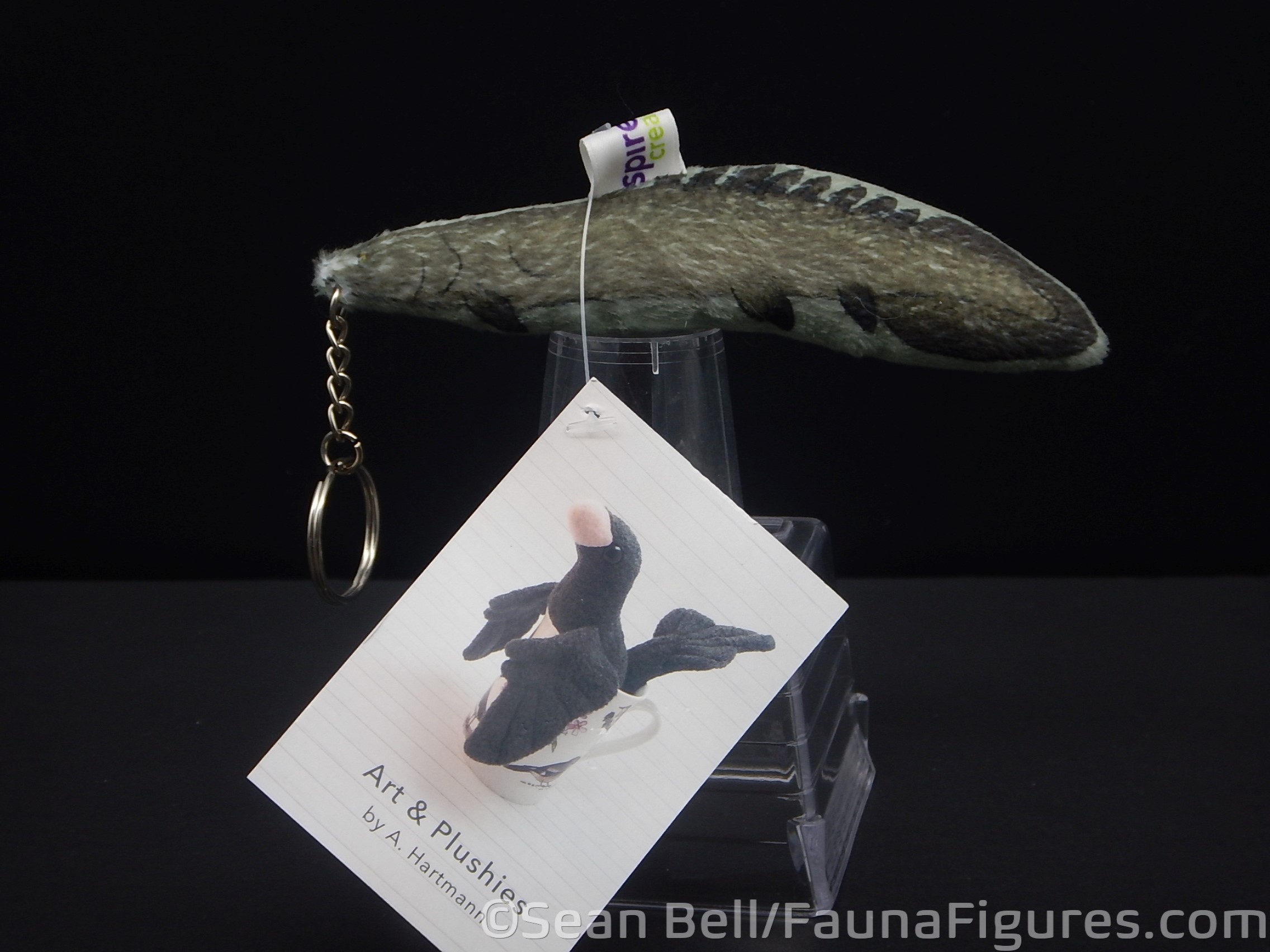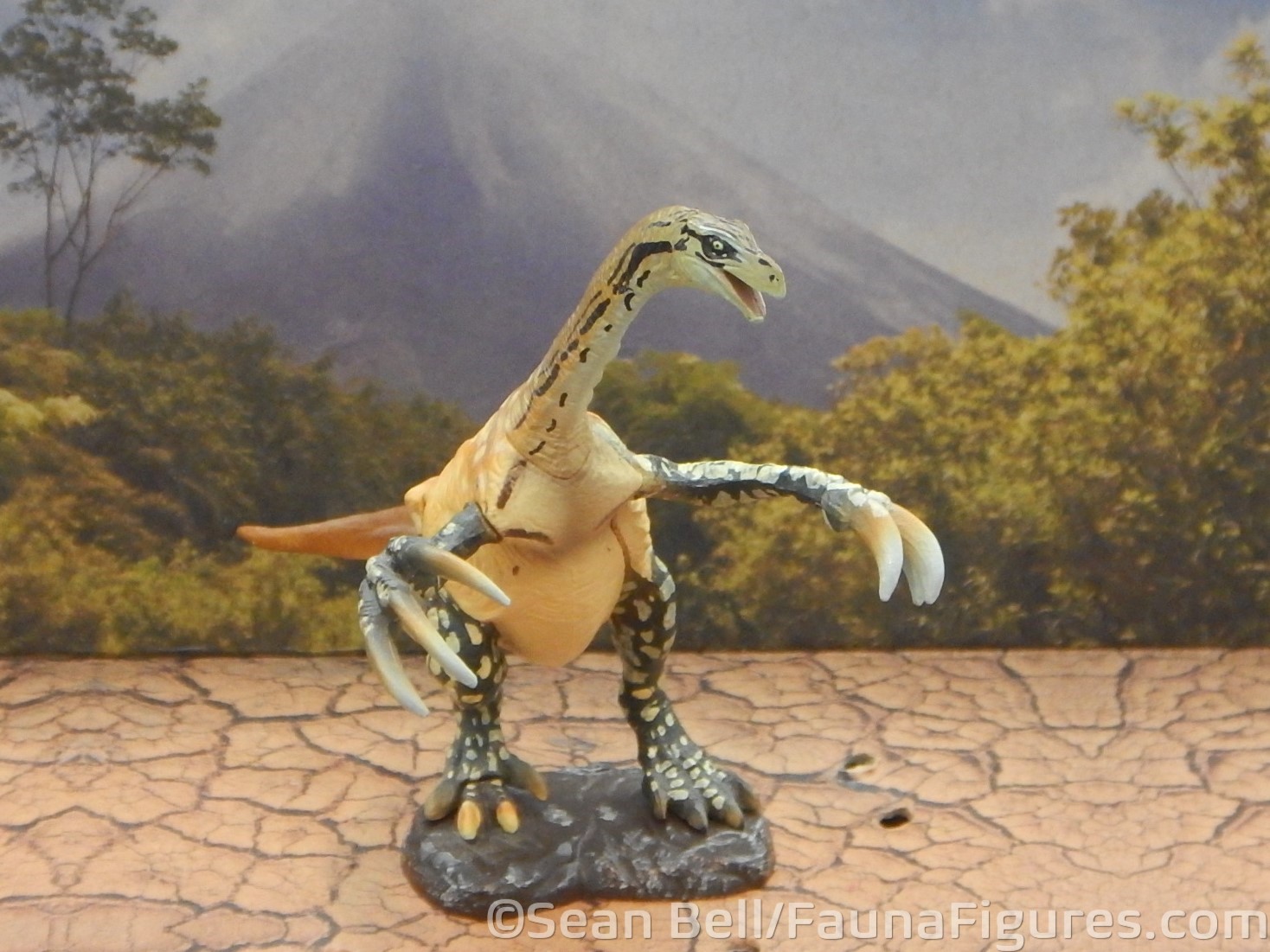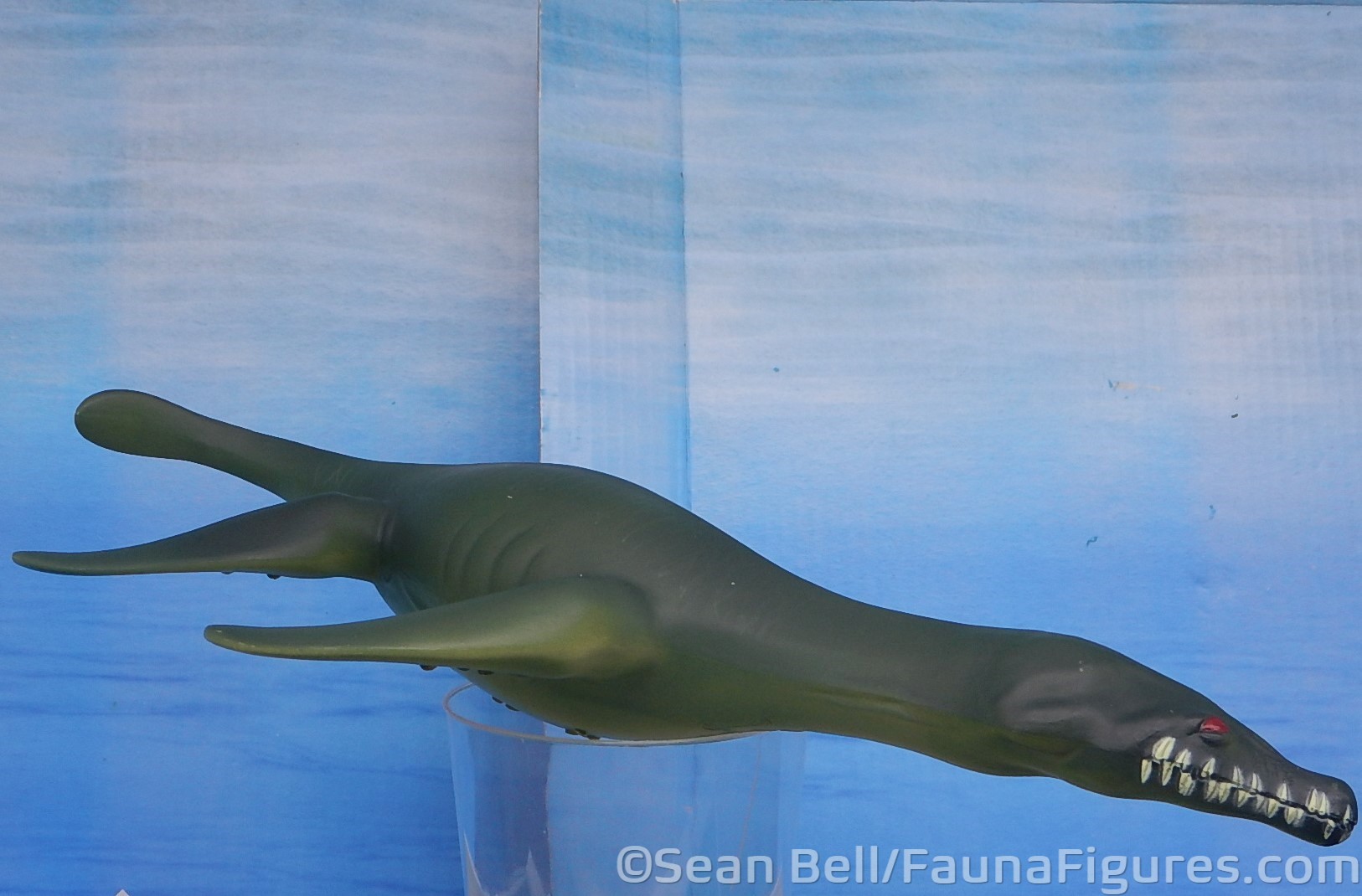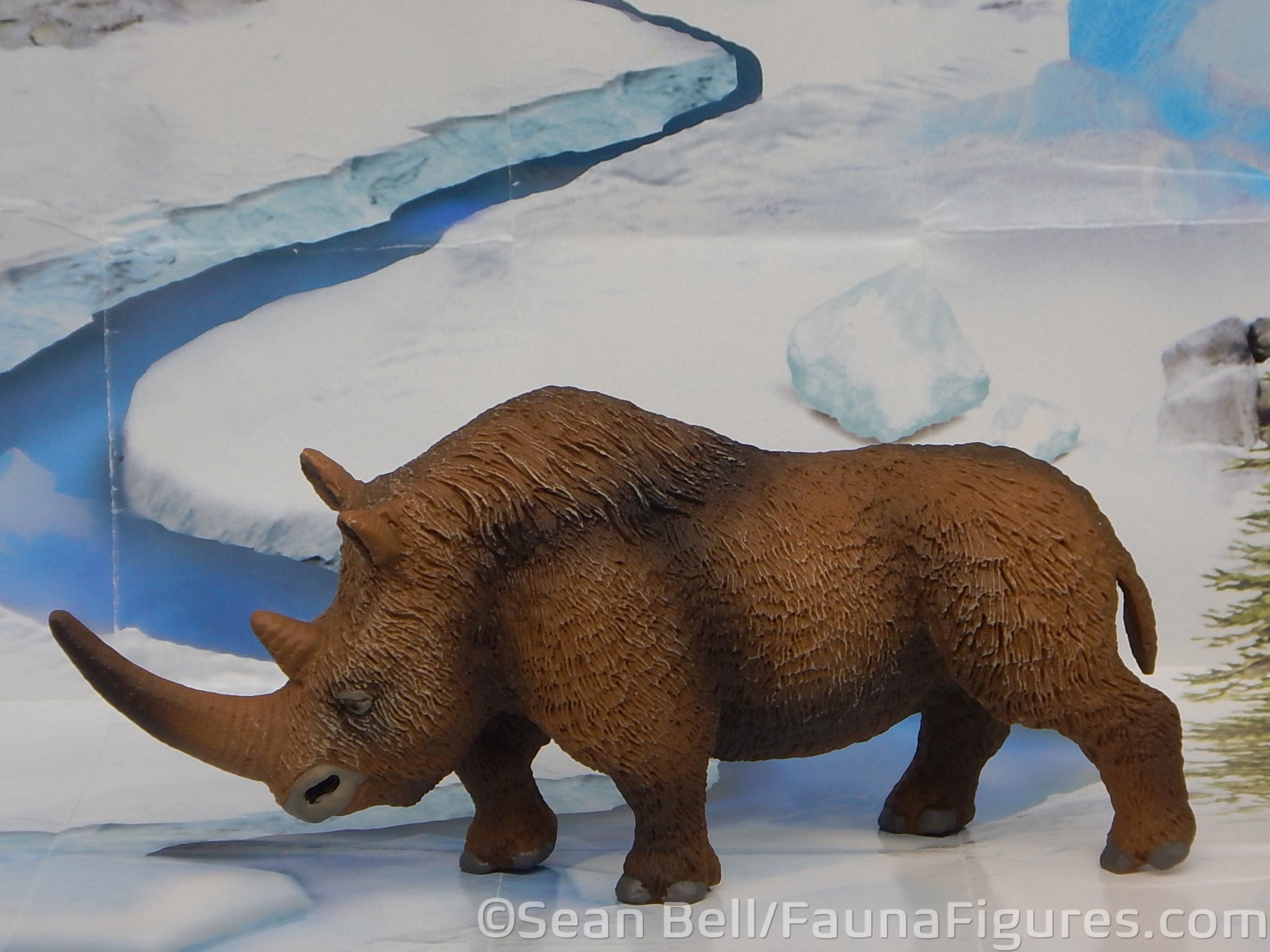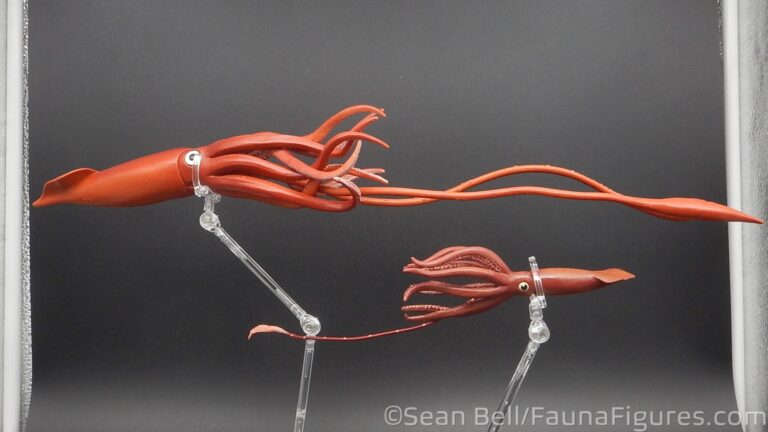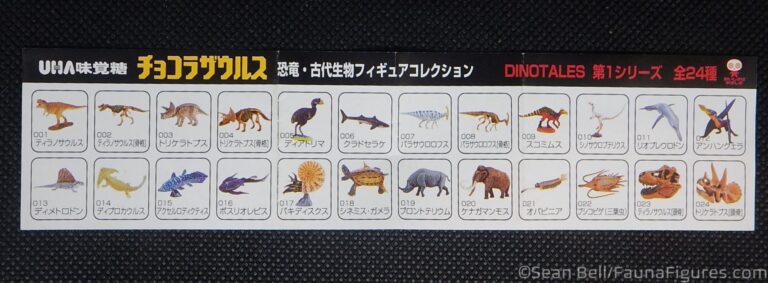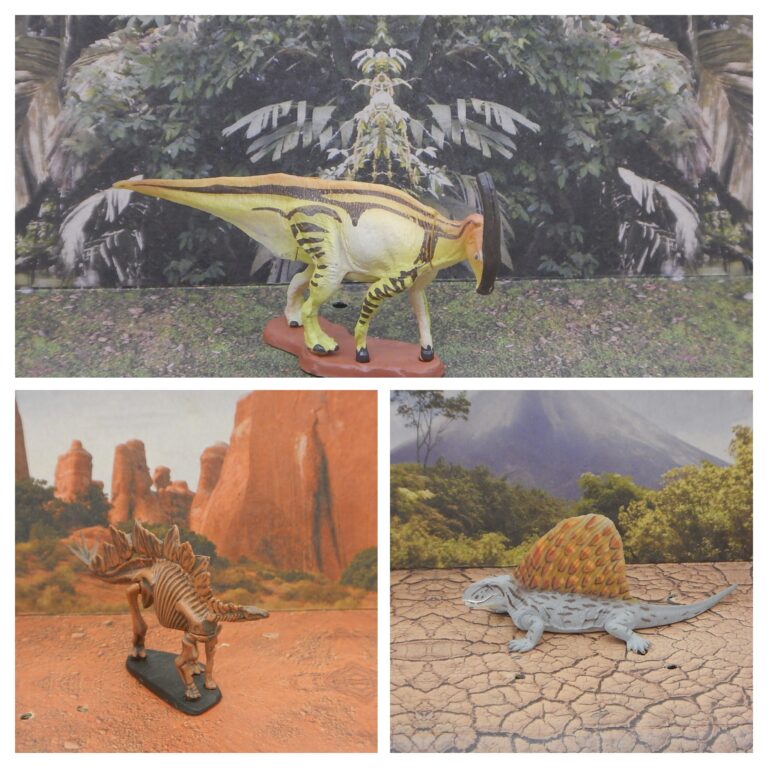Prehistoric Figure Frenzy! A whole bunch of different species…three from some of my . Plus, one really unique one, a plush prehistoric polypterid! Let’s take a look.
Spirellity Bawitius plush key chain
So I’m just going to start with this one! It’s a small plush printed Bawitius that was sold as a key ring, made and sold by an artist called Spirellity. I was fortunate enough to meet them at TetZooCon 2018 in London as one of the vendors. They specialize in all kinds of plush designs…and there was a whole basket of fossil fish as key rings. Most were Palaeozoic, but once I spotted the bichir, that decision was made (can’t remember why I didn’t get the rest though…)! But it’s pretty exciting to have someone acknowledge this giant prehistoric fish! At least until we see some figures or 3D prints or something (I do have one custom model of course!). I don’t see the key chains on the current Spirellity website, but hopefully they are still somehow around. Maybe it’s something done specifically for meetings and other events? I know a few other people ordered them, because, again, giant fish! There are never enough prehistoric fish figures.
Kaiyodo Dinotales Series 4 Therizinosaurus
Next, another classic figure from the Kaiyodo Dinotales series. This Therizinosaurus is from the 4th series, number 074 in the line. I think I mentioned that at some point, Kaiyodo changed how they released their Dinotales series. The first 3 were sold as sets of 24 with UHA candy in boxes, the last three were sold as sets of 12 designs in two paint schemes with drinks in a couple of different store chains. This one, series 4, was sold as a UHA chocolate set like the preceding 3, but there were only 14 designs. So similar to the originals, but fewer models. This Therizinosaurus figure demonstrates how Kaiyodo upped their design game quite a bit, and given the period that it was made, it’s a pretty decent model. Of course, current understanding is that this animal should have been feathered; fortunately, Kaiyodo later did re-release a Therizinosaurus with a CapsuleQ Museum figure and updated it. This figure is of course out of production, and overall the 4th series is not especially easy to find, but very worth looking for it.
CollectA Deluxe Rhomalaeosaurus
Next, we have a figure from the CollectA Deluxe prehistoric figures line. This is their Rhomalaeosaurus, number 88440, released in 2011. The figure was released as a 1:40 model (as were most of the Deluxe prehistoric reptiles), however that has to be based on some outdated length estimates; at 31cm long it is almost twice as long as it should be. The figure itself is a really nice model, with the distinctive head shape smooth, sculpted lines. A nice touch is the barnacles on the belly, a nice touch that is one of CollectA’s trademarks, giving some details that makes it feel like a living animal. The use of barnacles is especially interesting, as a reminder that giant pelagic animals would always be a popular source of a ride for those weird crustaceans (if a collector is more invertebrate inclined, then the Rhomalaeosaurus might make a great base for a barnacle figure…?) It is good to report that this figure at least is still readily available at this time, and should be an easy one to add to a collection!
Safari Ltd Woolly Rhino
Finally, a new version of a classic beast from a modern classic company, the Woolly Rhino released in 2019 by Safari, item number 100089. There isn’t a lot that can be said about it, but the figure overall is a fantastic model. It has that heavy rhino look, with a sufficiently shaggy appearance. They have done a great job giving it a furry look, sculpted into the plastic to appear to have a bit of a mane. The colour is also interesting, the dark highlights giving a neat looking shadow across the belly, back and forelegs. It would be nice of the horn were textured a little differently, but otherwise, I couldn’t recommend this model enough. It’s better than other recent Woolly Rhino (Coelodonta) although it’s also one of the few that is actually still in production. I definitely recommend adding one to the collection; we need more, and more varied, prehistoric mammals!


